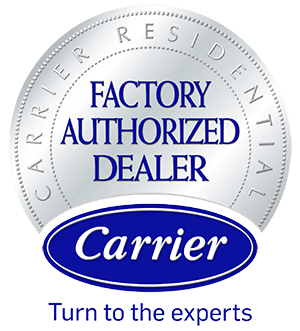Vacation Soon? Leave Your AC On

The key to a fun and relaxing vacation is taking care of all the right details before you leave. You can also give your home HVAC system a “working vacation” of its own and save a little money in the process. Here are a few easy tips to help you prepare your home HVAC system for safe and energy-efficient operation until you return from your trip.
Choose your Optimum Vacation Temperature
The United States Department of Energy recommends setting your thermostat to 78 degrees when you’re at home, 85 degrees while you’re at work, and 82 degrees when you’re asleep. Some families prefer a higher or lower everyday temperature, but the Department of Energy bases their recommendations on what represents the best balance of comfort and energy usage.
When you’re going on a summer vacation, you can save some money by raising your thermostat to 82 degrees or higher. If you’re taking a winter vacation, you can set your thermostat to the mid to high 60s. If you’re leaving pets at home while you’re away, you should check with your veterinarian for a recommended pet-safe temperature.
If you and your family prefer your home to be a different everyday temperature than the Department of Energy recommendations, an easy rule of thumb to remember is to set your thermostat 5 degrees warmer or cooler than your usual preferred temperature. You might consider going beyond the 5-degree range to pinch a few more pennies, but the minimal energy savings it might offer doesn’t usually offset the risks associated with running your HVAC system outside of its optimal temperature range.
During the summertime, your indoor temperature shouldn’t exceed more than 84° when the outdoor temperature is in the 90s or higher. Setting your vacation temperature at 84° allows your system to keep your home safe from humidity and heat-related damage. It’s also a safe temperature for most household pets.
Program Your Thermostat
Be sure that your unit’s fan is set to “auto” rather than “on.” Running your fan continuously offers minimal impact on your comfort when you’re home and wastes a lot of energy while you’re away. If you have an old-fashioned thermostat, all that you have to do is set it to your vacation temperature before you leave. Most programmable thermostats also offer a vacation setting that only takes a minute to set. Be sure to consult with your owner’s manual for specific instructions on how to set the vacation mode on your programmable thermostat.
You can also now remotely access most programmable thermostat models using a smartphone app. As you lounge by the pool, you can monitor the temperature back home and make adjustments on the fly. If the neighbors are coming over to bring in your mail or water your plants, you can have the house comfortable for them while they’re there and return it to your away setting after they leave.
Can’t I Simply Turn My AC Unit Off?
If you’re going to be gone for a long period of time, it doesn’t seem to make much sense to pay to run your air conditioning in an empty home. Unfortunately, it’s often a false economy. Your HVAC unit has an anticipated operational lifespan of 12-15 years, and it experiences more wear and tear than usual each time it has to bring a home to a comfortable temperature after an extended period of sitting idle.
In addition to cooling your home, your HVAC unit helps dehumidify the air. Humidity combines with heat to create an ideal environment for biological growth, and mold and mildew can develop in a matter of hours. Excess moisture can also cause damage to your drywall and hasten the arrival of insects. Running your system in the mid-80s will allow your unit to cycle just enough to manage humidity levels, and you won’t have to return from your trip to an unpleasant musty smell throughout your home.
If you want to truly be able to relax on your vacation, go ahead and schedule your annual air conditioning maintenance visit before you leave. Puyallup Heating & Air Conditioning offers a wide variety of residential and commercial HVAC services, including furnace installation and repair, ductwork design and installation, gas piping furnaces, and full service and repair of residential and light commercial HVAC systems. Contact us for more information about HVAC services in Puyallup, WA.
Tags: AC Tips, AC Vacation Settings


